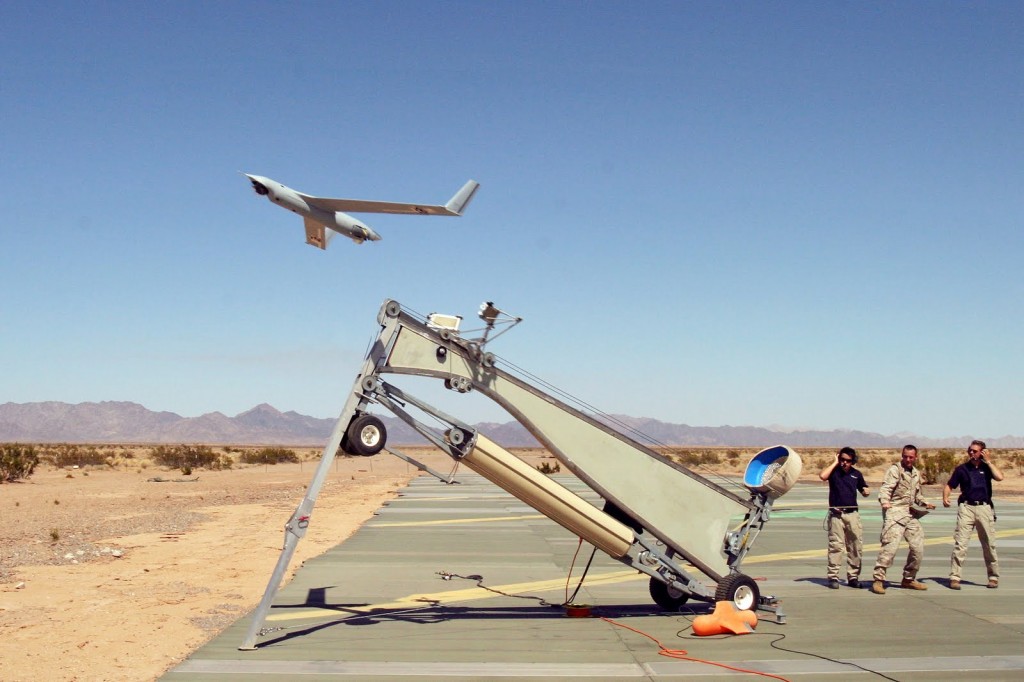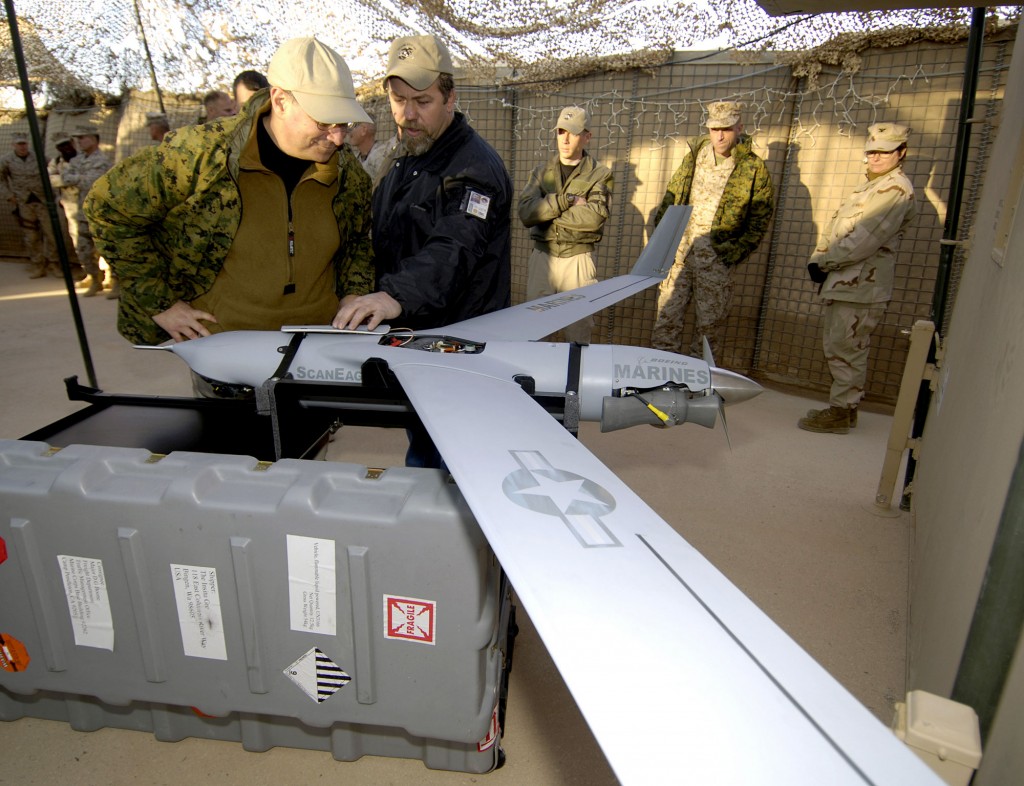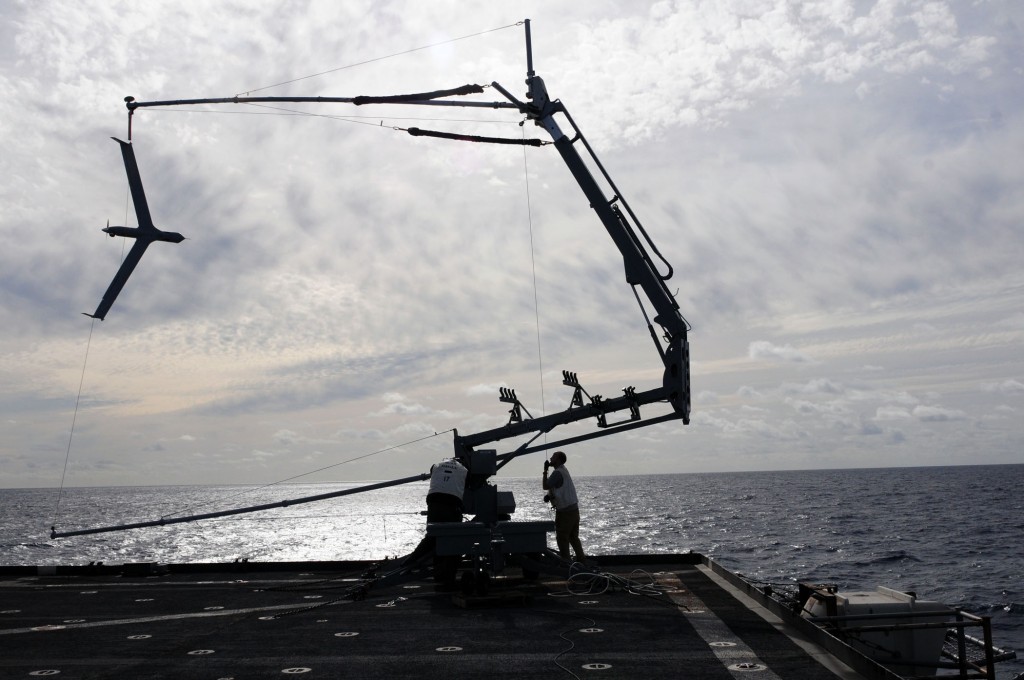
On December 26, 2013, the day after bombs killed 37 people in Baghdad, the New York Times reported that the United States was secretly selling drones and missiles to the Iraqi government in order to aid the fight against a resurgent al Qaeda. By all accounts, the situation in Iraq is growing increasingly desperate; according to IraqBodyCount.org, 9,300 people were killed in sectarian violence in Iraq last year. The arms sale includes 10 ScanEagle reconnaissance drones and 75 Hellfire air-to-ground missiles. The Hellfires–strapped to the wings of a Cessna turboprop aircraft–offer a mode of lethal action while the ScanEagles, which are made by Insitu, a Boeing subsidiary, will provide aerial intelligence to Iraqi security forces. The 10 ScanEagles are part of a larger package of aerial reconnaissance platforms delivered by the United States to Iraq. According to the Times story, three surveillance Aerostat balloons and three small reconnaissance helicopters were sent last year and 48 Aerovironment Raven hand-launched reconnaissance drones will be delivered by the end of 2014. The small drones, and in particular the ScanEagle, are the cornerstone of the security package.
The Iraqi government hinted at the need for American drones on several occasions in 2013. In a visit to Washington last August, Foreign Minister Hoshyar Zebari said that Iraq would be open to American drone strikes to “target al Qaeda and their bases.” Later that month, Iraq’s Ambassador to the United States Lukman Faily told Foreign Policy Magazine’s The Cable blog, “The reason we’re now considering drone supportis because we need to get better control of the sky so we can track and destroy al-Qaeda camps in the country.” In an October visit to Washington, Iraqi Prime Minister Nouri al-Maliki asked President Obama to accelerate a delivery of reconnaissance drones–presumably the ScanEagles–which Iraq had purchased from the United States to monitor the border region with Syria, where al Qaeda groups are gaining ground against Iraqi security forces.
While these reconnaissance drones are hardly impressive–or seemingly effective–as the armed Predators and Reapers that Iraq would have liked, the choice of ScanEagle drones is not a surprising one. These and other small reconnaissance drones are being purchased by an increasing number of foreign militaries. Between the ScanEagles, the Ravens, and the Aerostat balloons, the importance placed on unmanned aerial reconnaissance for counter-terrorism and counter-insurgency operations clearly extends beyond the American military. The ScanEagle demonstrates why these small reconnaissance drones–and not the larger Predator or Reaper drones–are driving the development and adoption of unmanned technologies within the United States and abroad.

The ScanEagle drones made their first appearance in combat over Fallujah and western Iraq in 2005. At the time, the Marine Corps’ First Expeditionary Force was engaged in a fierce battle for control of the city of Fallujah. The ScanEagles helped provide the Marines with greater situational awareness. The Marines’ positive experience with the ScanEagle prompted the Navy to award Boeing a $14.5 million contract for ScanEagle aircraft and services. Because the ScanEagle does not require a landing strip or helicopter pad—it is launched from a portable catapult—the aircraft has a long history of maritime operations. In fact, when Insitu designed the prototype in 2001, it was not intended for military use but rather for the commercial fishing industry. Throughout its development, Insitu focused on maritime operations; in 2004, the ScanEagle set the record for the longest unmanned flight at sea at 16 hours and 45 minutes. The ScanEagle became the choice UAV for the Navy and the Marine Corps, reaching 600,000 combat flight hours in 2012. At $100,000 per drone, the ScanEagle was Boeing’s best-selling aircraft in 2009.
Several years before the Obama administration announced the strategic “pivot to Asia,” Boeing Insitu made their own expansion in the Pacific by opening an affiliate office in Australia in 2009. According to Boeing Insitu’s background of the ScanEagle, Insitu has ScanEagle contracts with Canada, Australia, Poland, Malaysia, the Netherlands, Singapore and Japan. In 2013, Britain’s Royal Navy awarded Boeing Insitu a $45 million contract for contractor-owned and operated ScanEagles. In a January 2012 presentation at a conference of the Association for Unmanned Vehicle Systems International, Marine Corps Col. James Rector, the program manager of the Navy and Marine Corps Small Tactical Unmanned Air Systems Program Office, said that the Navy was considering selling the aircraft to Kuwait and Pakistan. According to The Washington Post, beginning in 2006 Boeing contractors trained the Colombian military to use U.S.-supplied ScanEagles in counterterrorism and counternarcotics operations. In December 2011, Iran claimed to have captured an American Navy ScanEagle drone and is believed to be producing replicas to supply Hezbollah and the Syrian government.

The ScanEagles are also playing a key role in the integration of drones into American airspace. ScanEagles have been used to fight wildfires in Alaska, train drone pilots at the University of North Dakota and survey the flooding of the Red River along the North Dakota-Minnesota border. The ScanEagle was the first commercial drone to be operated in the United States. In August 2013, the Federal Aviation Administration granted the energy giant ConocoPhillips a permit to fly the drone over their drilling operations in the Arctic. In anticipation of the opening of American airspace to drones, Boeing Insitu has pushed the development of the ScanEagle’s technological capability to operate with other unmanned aircraft . In 2010, Boeing Insitu participated in Smart Skies, a project by the Australian Research Centre for Aerospace Automation. The Smart Skies project researches technologies that could permit the automated integration of unmanned and manned aircraft into a single air traffic control system. In 2011, together with Johns Hopkins University Applied Physics Laboratory, Boeing exhibited their swarm reconnaissance technology. This technology, which is modeled on insect behavior, permitted two ScanEagles to fly autonomously and communicate with a Procerus Unicorn drone.
Whether the drone is used in domestic emergencies or for combat operations abroad, Boeing Insitu has managed to sell the ScanEagle as an essential platform. The history of the ScanEagle suggests that it is with these small unmanned aircraft that the future of drones will be decided.
